Is there a difference in handling/training?

Cartoon: Roo Roo Design
Whatever the size, all dogs have four legs and a
tail. Handlers need to form a working relationship with their dog. The agility equipment and
courses are the same or very similar. We use the same commands etc. etc. So is there a
difference in handling/training a small dog compared to a large dog? If so, why is this the
case and should it be so? Lynne Stephens who currently runs both a Standard and a Mini dog
considers the question.
Having been
asked to consider what I felt to be the differences in handling a small (Mini/Midi) or large
(Maxi/Standard) dog in agility, I began by comparing my own two currently competitive dogs.
|
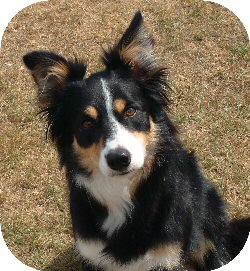
Chess
|
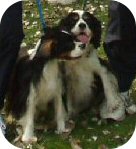
Quiz & Nicson
|
Viva la difference
At first, there seemed to be a number of differences between these two. The most obvious
is the comparative speed of Quiz, a Cavalier King Charles Spaniel and Chess, a Border Collie.
There is also the fact that Quiz seems much happier if I am running beside him, whilst Chess
really does not have all that time to waste on waiting for me.
When running
Quiz, I also spend more time looking at the ground, (though whether this should be the case is
debatable), making it difficult at times to re-orient myself for the next part of the course
and much more likely that I will end up on the ground. This has happened on occasion!
With Quiz I
am usually able to get into a sensible handling position, performing manoeuvres and turns,
which would be totally impossible with Chess. However, this also means that I do far more
running with Quiz and leave Chess to do more of the legwork by himself. I seem to need to be
fitter, therefore, with Quiz, which, I guess, dispels the myth that as one becomes older (more
mature?) and less agile, one should invest in a little dog!
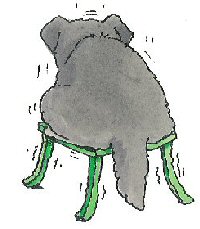 But...
But...
However, as time goes by, I wonder whether this difference in
handling the two dogs really boils down to some of the differences in initial training and my
initial expectations of them both.
I have
certainly trained a variety of breeds of dog for different disciplines and the observations I
have made above could easily have applied to the difference between Chess, (my fast border
collie) and Scratch (my husband’s steadier border collie) or Blitz (my much-loved but now
departed, steady Belgian Shepherd Dog). And I do not have to think too hard to think of some of
the best small dogs on our own British circuit and overseas who need to be, and are, indeed,
handled in the same way as some of our faster standard-sized dogs.
Therefore,
the more I began analysing the differences I had noted with my two current dogs, the more I
felt that they were merely differences in those dogs and not fundamental differences between
handling a small dog and a large dog. Perhaps some of these differences were purely the result
of different early training techniques used with the dogs, and different expectations in terms
of outcome.
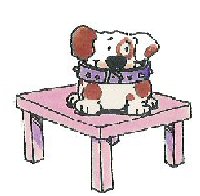 But
then again..
But
then again..
I was asked to write an article on the differences between training and handling small and
large dogs. So, surely there must be some? Once again I returned to the original question.
When
training, it is certainly true that Chess has a far longer concentration span and does seem to
pick up new ideas more quickly than Quiz. Introducing a new concept to Quiz takes a far greater
number of short, fun training sessions, particularly if I am trying to change a 'bad' habit
previously trained in!
But can this
really be attributed to size? I’m sure we could all think of large breeds - which may or may
not be Border Collies - that need the very little and often approach (many of you probably own
and train them yourselves) and small ones who can 'go all day.'
Conclusions
Finally, then at the risk of becoming extremely unpopular, I have come to the following
conclusions.
-
Fundamentally
there are no real differences between training and handling different sizes of dogs; but
there are training and handling methods and techniques that suit different dogs of any breed.
-
There are
also some breeds or individuals within that breed more suited to our particular area of
interest, begging the question 'Who are we doing it for and how realistic are our
expectations for some dogs?'
But that is
food for thought for another day.
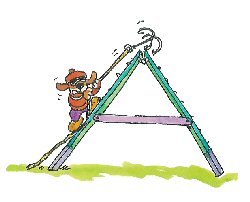 So what the problem?
So what the problem?
However, there are, particularly in this country I feel, some
very fundamental and deep-rooted differences in the way that we treat our small dogs and train
them for top class competition.
For example,
if a large dog began to develop an irrational fear of a particular event or piece of equipment
etc. handlers would probably be far more likely to try to remain positive and calm and try to
play through the particular difficulty. But, how many handlers have you seen cuddling and
coaxing one of the smaller varieties, when some upbeat positive handling and reinforcement
would have done more to solve and not compound the problem.
If a large dog is unable
to climb the A-frame, most handlers would, I suspect (and hope), first look to the fitness of
their dogs. This would also be true of some small dog handlers I know. However, I have, sadly,
overheard too many criticisms of the particular pieces of equipment in the small dog rings. For
example, heard at a recent show, “So many dogs are not making the A frame, there must be
something wrong with it!” On closer observation, I felt that most of the dogs having
difficulties were a little on the pampered and portly side.
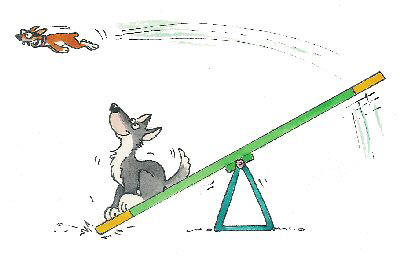 No
disrespect is meant to any handlers
No
disrespect is meant to any handlers
However... I do think that we need to look carefully at our own motives for owning and
competing with our small breeds. If we really do just want them to be cuddly, pampered pets -
and there is no reason why not - is it fair to be asking them to suddenly become top athletes
at the weekend? If we do, however, intend to compete with them, I would venture to suggest that
we should also ensure that they remain fit enough to participate in the sport they (we?) so
love.
Cartoon: Roo Roo Design
Attitude is everything
It is not just the attitude of the handlers that has to change, however, if we are to begin to
see the true potential and, consequently obtain some real 'street cred' for some of our smaller
canine companions.
Clubs and instructors
also have to play their part by taking small and medium sized dogs seriously and offering the
same levels of help and expertise at club level to those who choose to own and train smaller
breeds. I do realise that this can be a little more demanding and may tax the ingenuity and
patience of some. But anyone who has recently had the good fortune to watch the small dog
ambassadors from home and abroad will know that we are not yet fully exploiting all the
expertise we undoubtedly have in this country to make the best of our talent in the two smaller
height categories.
Not all dogs of any breed
or size have the potential to be world-beaters. However, those that do need to be trained and
worked with a positive attitude. This, I strongly feel, depends on the handler and dog in
question and on the quality of expertise that is sought in coaching these teams. It does not,
in my opinion, have anything to do with the size of the dog.
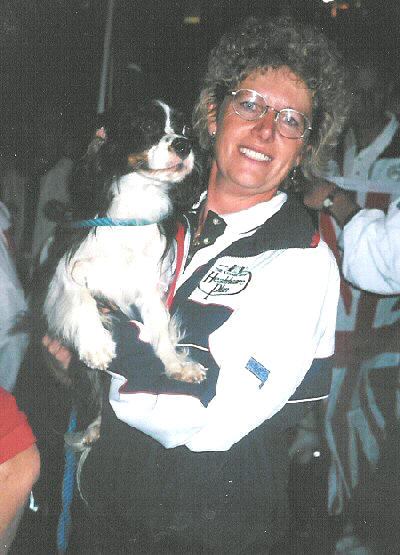 About
the author...
About
the author...
Lynne Stephens
has been training dogs for a variety of disciplines for the last 25 years. In the last ten
years she has trained two CKCS to Advanced level and one to Senior (with one more win to go to
Advanced), and has recently won into Senior with her standard Border Collie. She has qualified
for most major finals including Olympia, Crufts and the Agility Voice Mini Pairs Knock Out.
This year she has
qualified for Crufts again with her mini dog, Quiz and in the Mini-Maxi pairs with her Border
Collie, Chess. Husband Pete is her mini partner.
Lynne also coaches Pete
with his CKCS, Nicson and both represented Great Britain this year at the World Agility
Championships.
From Rachel Woods
This article
emphasises just how different dogs can be, not just by size but by breed, temperament, attitude
and confidence. I know of Minis that work well ahead of their handlers as well as those that
like to be beside or like to chase the handler round the course. A style will work well if that
suits the dog's needs and style. In the same vein, we have all seen the collies that work miles
from their handlers. But what about all the ones you see that are determined to be stuck to
their handler's legs à la obedience - many who spin in front of obstacles and certainly provide
a tripping hazard. A dog-handler combination must try to find a style that works for both
parties.
I have neither a little
or a big dog but one that sits firmly on the fence as a Midi but he is also happy at full
height. I find myself altering styles depending on jump heights. Despite the little guy having
rubber feet, he has a job take full height fences at severe angles so I don't expect him to. He
just doesn't see them in time (that and the fact that he gives the preceding fence about a
metre clearance either side.) He actually jumps too big to make some right angled
combinations. Because of this, I have to change approaches to fences to help him and me. Also
with the extra 1/4 second he spends in the air at each fence, he gives me time to be with him
for a good part of a course.
However, when running at
Midi height, I am very much steering him from behind as his acceleration over Midi fences is
quite frankly scary. If we ever get the contacts right watch out world! It has taken some
years, but we are now at a point where both styles suit us.
Size is, in my view, one
of the more irrelevant factors when it comes to handling styles. More important should be the
dog's physical ability, speed and fitness (not necessarily diminished in a smaller dog),
attitude to agility and confidence. We also have to look at the handlers ability, physical
fitness and speed.
It can be seen from the
many more senior agility competitors that succeed with their dogs despite never having a hope
of keeping up with them in speed. They do the sensible thing and train their dogs to either
work at a distance or, if they aren't concerned about speed, they teach them to slow up a bit.
Which they choose obviously depends on how competitive the handler is.
(12/09/2017)
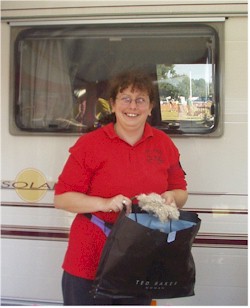 From
Soraya Porter...
From
Soraya Porter...
I'd like to make a
few comments about the 'Big, Little' article. Firstly I think the author is very brave to put
'her head in the lion's mouth.' Such an emotive subject is bound to create comment.
I only run a small dog.
Please note I say small rather than Mini — a much more sensible title - but I train people with
large dogs and medium ones as well.
I think part of the
problem is that people think that anything other than a Standard dog has to be treated
differently. As a matter of course. Standard dog handlers are taught how to cope with a dog
that is much faster than their running ability. They teach their dogs how to work ahead. How
many of the two smaller height categories are lucky enough to have been taught how to work
their dogs away from them? It is expected the dog will run alongside them and that is how they
are taught.
With the exception of
very small dogs or breeds like Pekes, most dogs can run faster than their handlers, and should
be encouraged to work ahead if at all possible. BUT they need their trainer to show them how to
do it! In open competition at my club, my Mini can beat the fastest Collies on occasions, and
has been taught to run and be handled like one with regard to working ahead.
The real difference in my limited experience is in the
motivation.
This is not a difference between large dogs and small ones, but
a difference between working sheep breeds and others. A dog such as a collie - and I realise
there will always be exceptions - comes pre-wired with a drive to work. Other breeds need to
know 'what's in it for them'? The trick is to find out what motivates that dog and use it to
get them to work for you. What may come naturally to some breeds to work away from the handler,
has to be taught to other dogs. A handler has to spend time training in that 'motoring' ability
to the highest degree that that individual dog can give.
Repetition is another bugbear.
A sheep herding breed may be able to take as much repetition as is felt necessary for that
training point. Other breeds get bored. They switch off. They've done it twice and then they
begin to wonder if they've done something wrong, and put in variations in an effort to please.
Use a variety of methods to train a point if you want to keep this type of dogs interest.
Lastly - overweight and babying.
Many dogs of all sizes are overweight. The difference is that a
large dog may well still have enough strength from its back legs, and momentum, to be able to
scale the A-frame. Although a substantial obstacle, it is less of one to a Standard, compared
to say a Toy breed. So people notice that fat, large breed less than the similar small breed.
Yes, many dogs do need to loose weight, but are we really being fair to smaller dogs in asking
for them to do a full size A-frame? My dog doesn't have a problem, but many fit, slim, small
dogs do.
As to the babying issue,
perhaps that handler doesn't understand the negative effects of their actions. Has anyone taken
the time to explain it?
I am not a 'moaning Mini' handler.
I do think that there are many clubs who don't give their
smaller dogs and handlers the help they need. This may be because they think they are a waste
of time. However, I would be inclined to say that it is more likely that the trainer is not
aware of the motivation, drive and repetition issues.
You may argue that I am
saying treat them differently. All dogs are different and may need a variety of methods to
train them. However, the quality of their training should be the same regardless of size and so
should the goal — a dog that can work confidently ahead of the handler, responding to commands
with drive and determination... and having a wonderful time!
Apologies if I am
'teaching Granny to suck eggs' but I just felt I had to put my 'two pennyworth' in.
12/09/2017
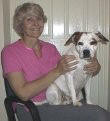 From
Penny Cockerill...
From
Penny Cockerill...
Further to the
article by Lynne and comments by Soraya, I think they both had valid points to make - but in a
way, are they missing the point? Surely the training would be much better aimed at the breed
rather than the size.
As a terrier owner, some
might say I could never take agility seriously! On the other hand, my Staffie/Jack Russell midi
chose the sport herself when she began vaulting the furniture, and has never lost her
enthusiasm or drive, as Sylvia Trkman would say.
I have to work her from
behind because of her speed, but training a collie MUST have a different perspective from
training a terrier or hound or other type, for that matter. I am perfectly happy training with
all other breeds. I just know I have to be patient and keep hold of my sense of humour! We WILL
get that clear round!
P.S. Wonderful, wonderful
illustrations by Kim to the training by size article!
Cartoons: Roo Roo Design


 But...
But... But
then again..
But
then again.. So what the problem?
So what the problem? No
disrespect is meant to any handlers
No
disrespect is meant to any handlers About
the author...
About
the author... From
Soraya Porter...
From
Soraya Porter... From
Penny Cockerill...
From
Penny Cockerill...